#American portraitists
Text
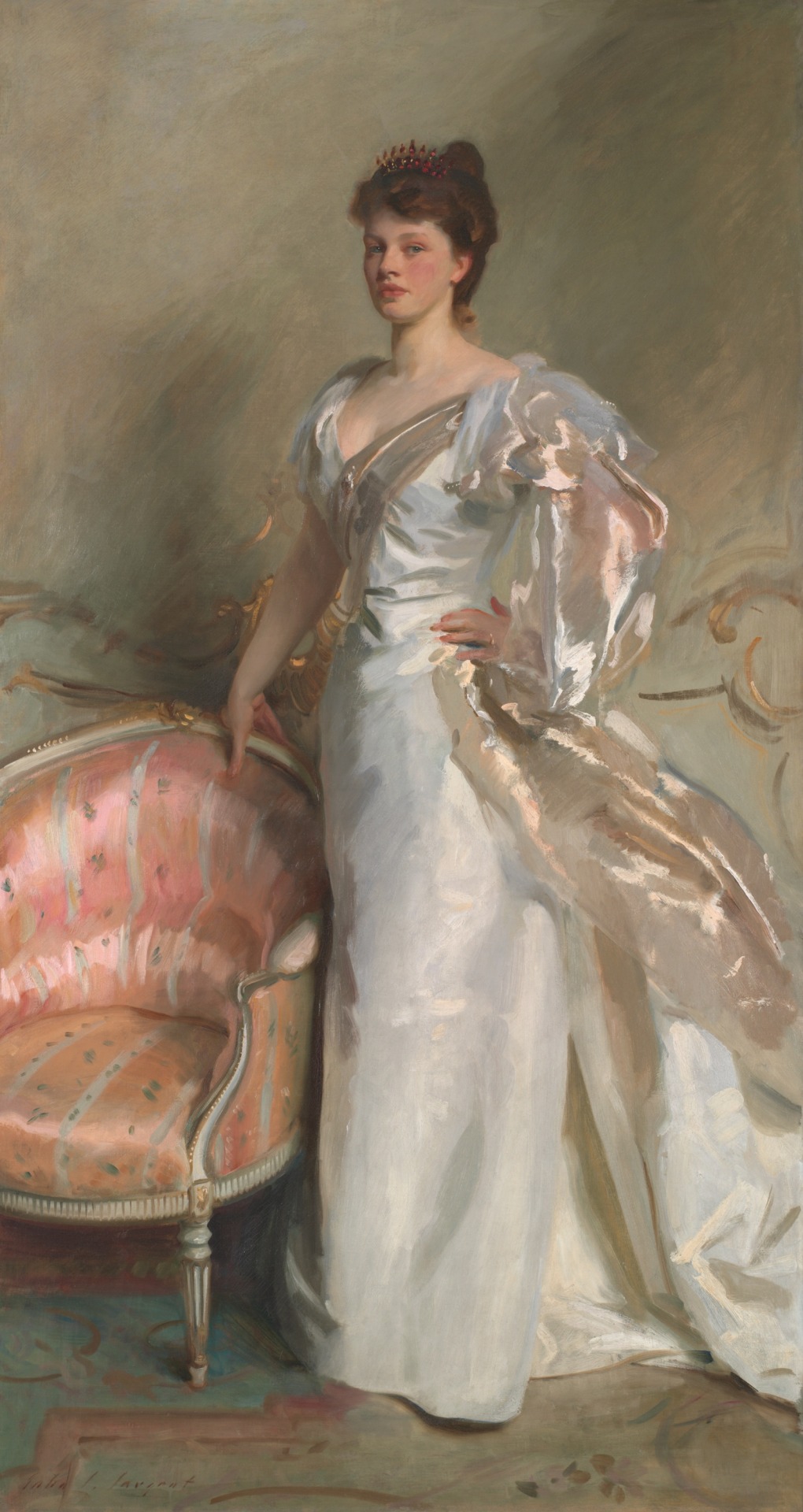
Mrs. George Swinton (Elizabeth Ebsworth)
John Singer Sargent (American; 1856–1925)
London, 1897
Oil on canvas
Art Institute of Chicago, Chicago, Illinois
#John Singer Sargent#Sargent#American art#American painters#American portraitists#Edwardian Era#Gilded Age#19th century#1890s#portraits#society portraits#fashionable#Mrs. George Swinton#Elizabeth Ebsworth#Elizabeth Swinton#Elsie Swinton#Grand Manner#gowns#satin#drapery#fabrics#tiaras#virtuosity#brushwork#chairs#upholstery#singers#amateur singers#high society
61 notes
·
View notes
Text
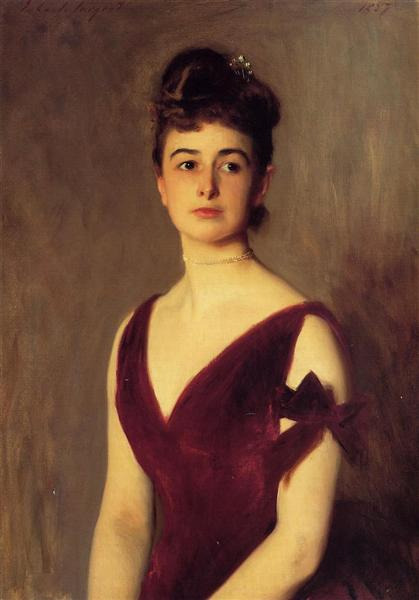
John Singer Sargent (American, 1856-1925) • Portrait of Louise Pomeroy Inches • 1887 • Museum of Fine Arts, Boston

Evening Dress • Unidentified Maker • American • Silk velvet with silk plain weave lining

How wonderful that such a well-preserved dress exists to enliven a famous portrait painting! This dress is one of my favorites for a couple of reasons – firstly, I love velvet and this silk velvet is the real deal – gorgeous. Secondly, I've seen the portrait many times at the MFA in Boston. The dress was in a glass case at the blockbuster Fashioned by Sargent exhibition also at the MFA.
I've read that Louise Inches was expecting her third child when she sat for this portrait and that the dress had been designed to accommodate extra panels as her figure expanded. She and Sargent got on well. Both were music lovers and accomplished musicians.
#portrait#art#painting#art history#john singer sargent#female portrait#society portrait#american expat artist#artist#portraitist#museum of fine arts boston#paintings i've seen#historic dresses#fashion history#late 19th century art#fine art#the resplendent outfit#1880s fashion history
258 notes
·
View notes
Text
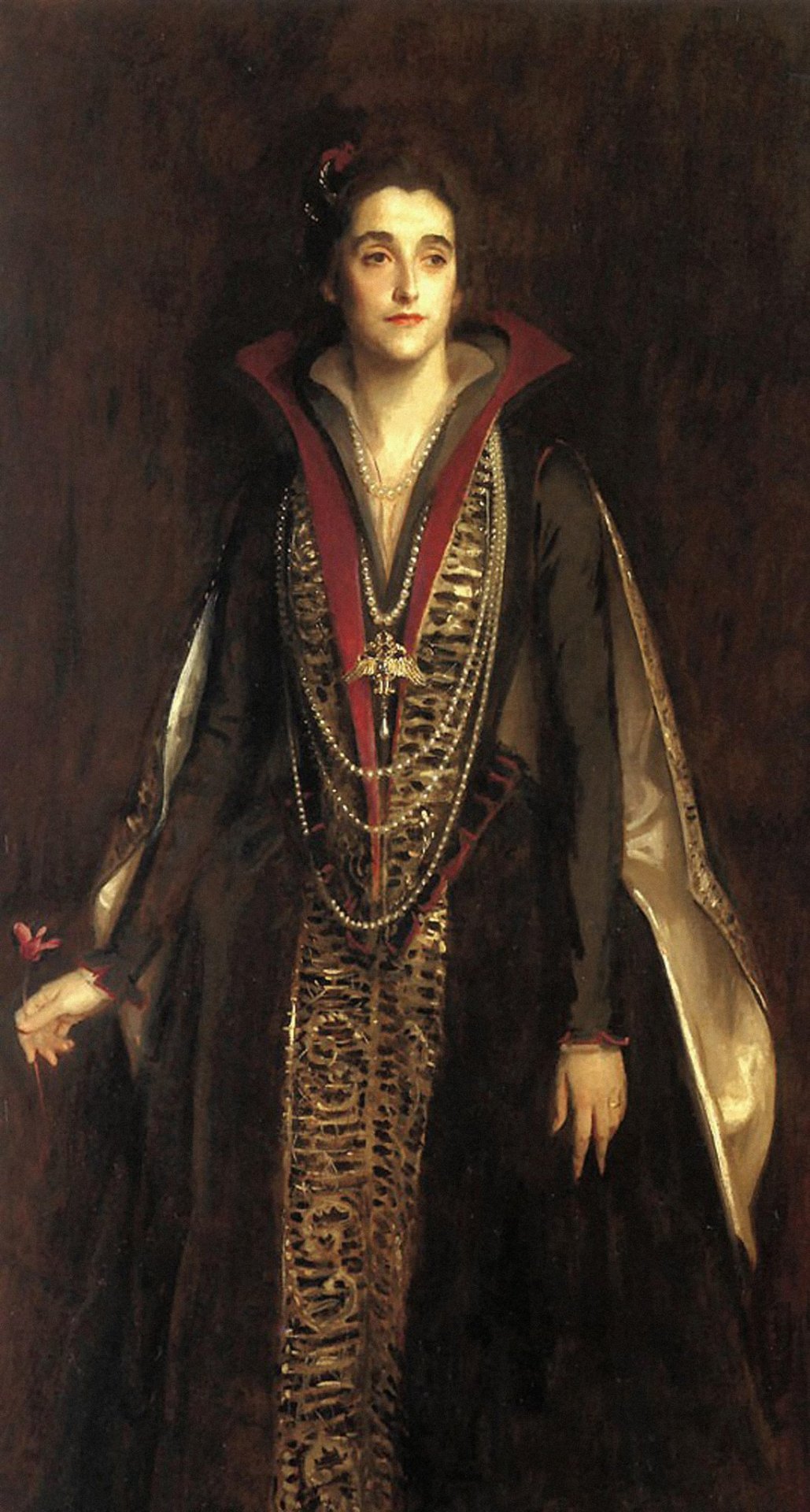
John Singer Sargent (American, worked in Britain) • The Countess of Rocksavage (Sybil Sassoon) • 1922 • Private collection
Gallery text (Museum of Fine Arts, Boston; special exibition: Fashioned by Sargent) :
Severe and frontal, Sargent's painting gives Sybil Sassoon the status and authority of an old master portrait. He must have had something deliberate in mind when he painted this, late in his career, since he was the one to order Sybil's dress from the House of Worth (displayed nearby). Its design resembles a 16th-century portrait of the queen of Spain, Anna of Austria, a member of the powerful Habsburg dynasty. The distinctive gold brooch in the shape of a double-headed eagle is the Habsburg insignia, and the jewel appears in both paintings. Sybil's brother Philip, a connoisseur and collector, owned the brooch, as well as the significant rope of pearls Sybil wears, which had been their mother's.
#art#painting#fine art#john singer sargent#portraits#female portrait#american artist#portraitist#art history#women in paintings#portrait#19th century art#paintings of women#art exhibition#art event#museum aesthetic#art museum#museum of fine arts boston#paintings ive seen#society portrait
182 notes
·
View notes
Text
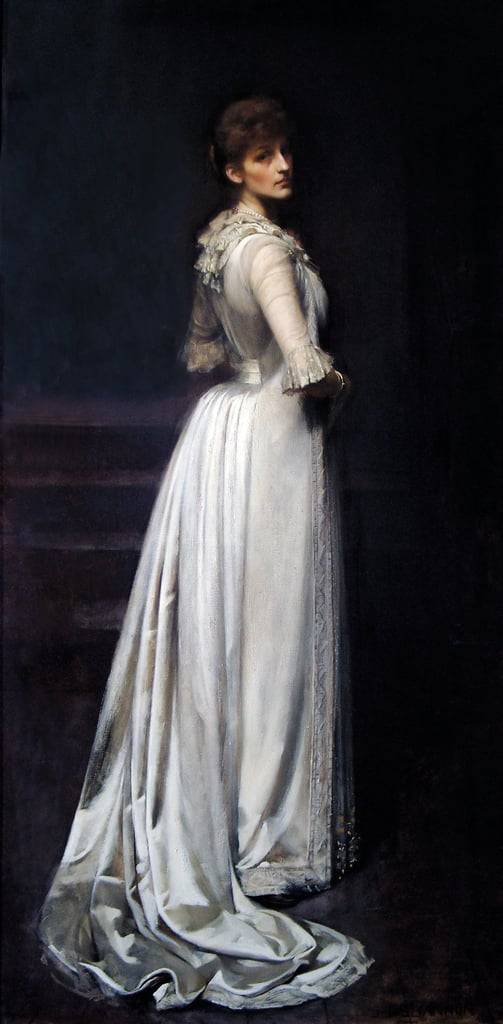
James Jebusa Shannon (American, active in Britain – 1862–1923) • Violet, Duchess of Rutland • 1889
#art#painting#fine art#art history#james jebusa shannon#american/british artist#oil painting#portrait#female portrait#women in paintings#women in white#the white dress#la robe blanche art blog#portraitist#portrait painter#society portrait
120 notes
·
View notes
Text

William Orpen (British, ) • The Studio • c. 1910 • Leeds Art Gallery, West Yorkshire, UK
#art#fine art#painting#william orpen#royal academician#paintings of interiors#making room blog#paintings of art studios#american painter#british artist#early 20th century art#british painter#portraitist
76 notes
·
View notes
Text

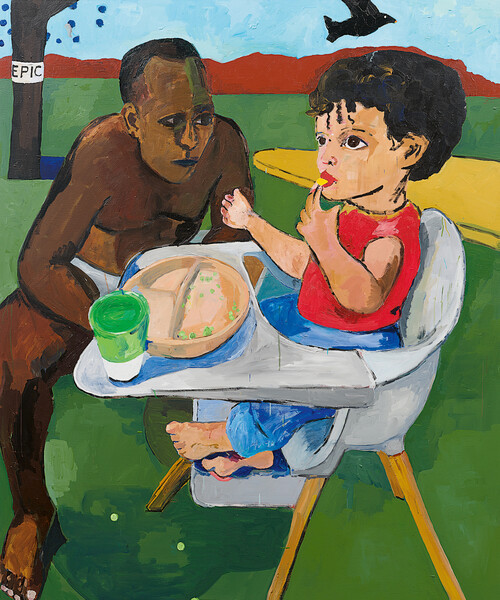
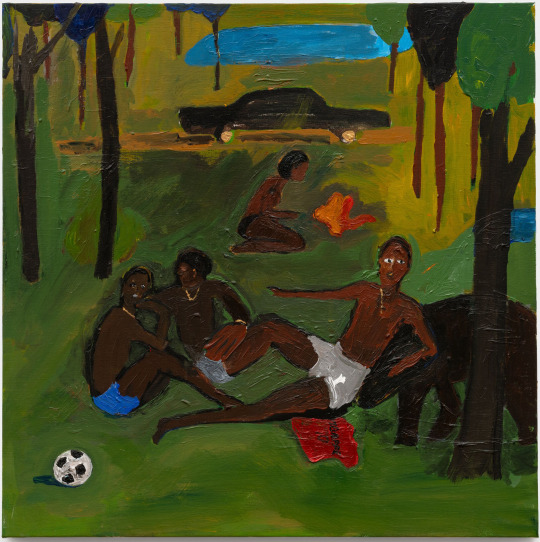




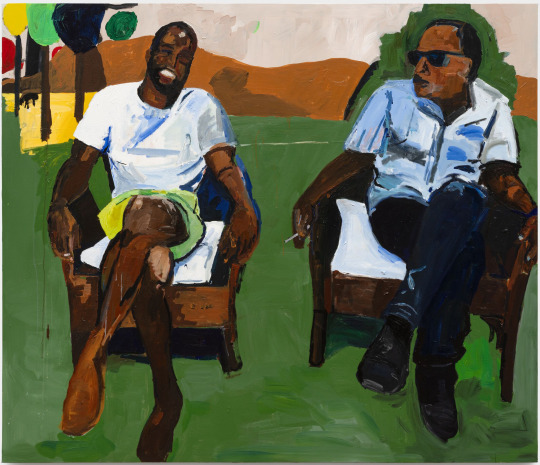

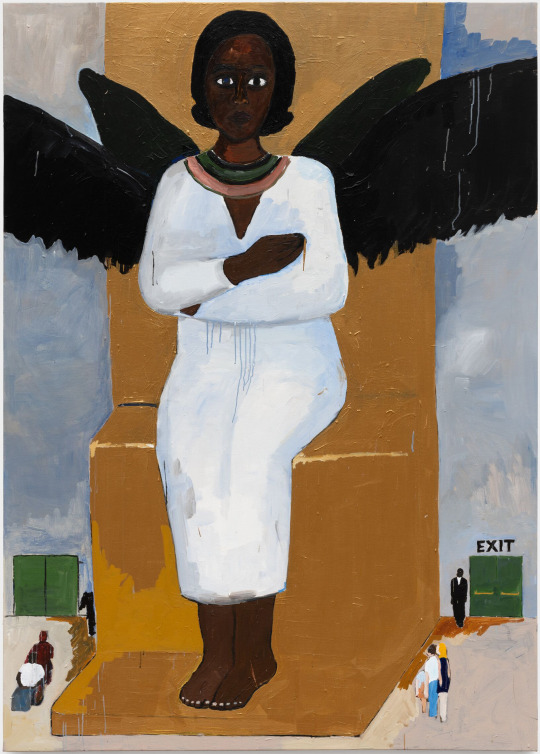

Henry Taylor born 1958, Ventura CA, USA
"Henry Taylor’s imprint on the American cultural landscape comes from his disruption of tradition. While people figure prominently in Taylor’s work, he rejects the label of portraitist.
Taylor’s chosen subjects are only one piece of the larger cultural narrative that they represent: his paintings reveal the forces at play, both individualistic and societal, that come to bear on his subject. The end result is not a mere idealized image, but a complete narrative of a person and his history.
Taylor explains this pursuit of representational truth: ‘It’s about respect, because I respect these people. It’s a two-dimensional surface, but they are really three-dimensional beings.’
54 notes
·
View notes
Text
Liam being bi again, let's not ignore it
On his IG live on 7.8.23, Liam said John Singer Sargent is his favorite artist. Sargent's sexuality is heavily debated; modern interpretations are that he was likely gay - at minimum, much more an admirer of the male figure than the female.
Sargent never married, was intensely private about his personal life. X He was a neighbor to Oscar Wilde and would have been very aware of his trial.
Sargent's paintings are often considered homoerotic or "remarking on the fluidity of human sexuality."
Many of his works are sensual portraits of well-built men in generally feminine poses - arched backs, heads thrown back in passion, etc.


His muse was Thomas Eugene McKellar, a Black bellhop at a posh Boston hotel. Every figure - both women and men - in Sargent's mural at the Boston Museum of Fine Art's rotunda - is McKellar's face - though with his race obscured, and who was paid only a small amount.
He also created many other images of McKellar, one of which he exhibited in his studio his entire life but never showed in an exhibit.
McKellar's family have said they suspected he was gay, and that's why he moved away to Boston.
Some of Sargent's contemporaries remarked about him having many trysts with men when he traveled to Venice and Paris, with a preference for men with darker hair and skin.
Andy Warhol named Sargent as one of his inspirations. Sargent's mural of Hell for the Boston Public Library is thought of as some of his least sensual work - yet when Warhol first saw it, he referred to it as a "gang bang."
On his IG live Liam also read a username that referred to Timothee Chalamet, and before answering the question, he remarked on his attractiveness, twice.
A few days earlier, Liam posted two photos on Instagram of him meeting British artist David Hockney who he called his "inspiration and idol." Hockney is LGBTQ and is known for his intimate portraits of gay domesticity:

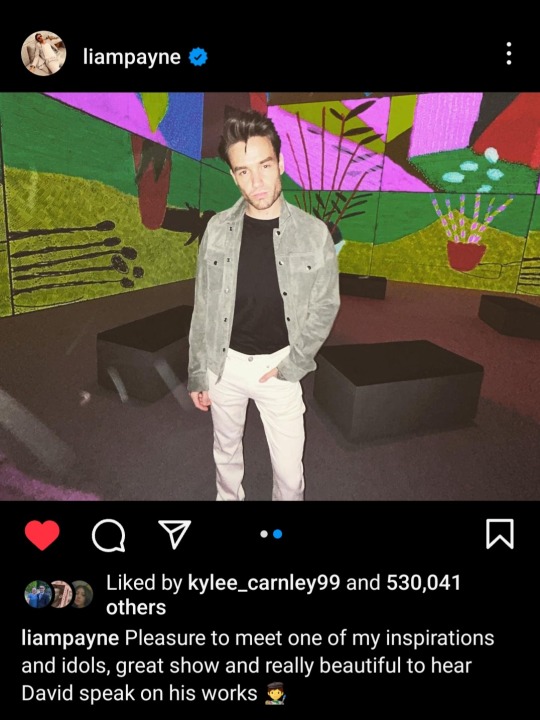
Here is a video of Hockney talking about Harry asking to be painted by him and someone please link the masterpost about Harry queer coding through talking about Hockney.
I'd say Lima mildly flirted with Mark Wahlberg in his thirst trap IG photo comments also x
Besides Ziam, my favorite bi liam content here x
#bi bi bi#bi liam payne#liam payne#queer coding#Liam's sexuality#not even gonna mention ziam in the post#john singer sargent#andy warhol#david hockney#Thomas Eugene McKellar#lgbtq artist#lgbtq artwork#7.8.23
50 notes
·
View notes
Text

Edward Weston Nude in Doorway 1936
In the 1930s, Weston and several other photographers, including Ansel Adams, Imogen Cunningham, and Willard van Dyke, formed the f/64 group, which greatly influenced the aesthetics of American photography. In 1937, Weston received the first Guggenheim Fellowship awarded to a photographer, which freed him from earning a living as a portraitist. The works for which he is famous–sharp, stark, brilliantly printed images of sand dunes, nudes, vegetables, rock formations, trees, cacti, shells, water, and human faces are among the finest of 20th-century photographs; their influence on modern art remains inestimable.
148 notes
·
View notes
Text

Juxtapoz Magazine - Hugh Mangum photography
Self-taught photographer Hugh Mangum was born in 1877 in Durham, North Carolina, as its burgeoning tobacco economy put the frontier-like boomtown on the map. As an itinerant portraitist working primarily in North Carolina and Virginia during the rise of Jim Crow, Mangum welcomed into his temporary studios a clientele that was both racially and economically diverse. After his death in 1922, his glass plate negatives remained stored in his darkroom, a tobacco barn, for fifty years. Slated for demolition in the 1970s, the barn was saved at the last moment—and with it, this surprising and unparalleled document of life at the turn of the twentieth century, a turbulent time in the history of the American South.
Hugh Mangum's multiple-image, glass plate negatives reveal the open-door policy of his studio to show us lives marked both by notable affluence and hard work, all imbued with a strong sense of individuality, self-creation, and often joy. Seen and experienced in the present, the portraits hint at unexpected relationships and histories and also confirm how historical photographs have the power to subvert familiar narratives. Mangum's photographs are not only images; they are objects that have survived a history of their own and exist within the larger political and cultural history of the American South, demonstrating the unpredictable alchemy that often characterizes the best art—its ability over time to evolve with and absorb life and meaning beyond the intentions or expectations of the artist.
The photographs originally exhibited at the Nasher Museum of Art and a book of the work is published by University of North Carolina Press.
If you enjoyed this, you might like: An Extraordinary Archive of Gold Rush Daguerreotypes
11 notes
·
View notes
Text

Painter, author, mixed media sculptor, textile and performance artist, and intersectional activist perhaps best known for her narrative quilts, Faith Ringgold who has died, aged 93, with her daughter, feminist author, Michele Wallace, photographed (date unlisted, possibly 2022-2023) by American photographer and portraitist, Annie Leibovitz (born in 1949).

RIP ....
4 notes
·
View notes
Photo

In the second half of the 1970s, Jimmy DeSana became an important portraitist of figures associated with downtown New York’s No Wave scene, such as the writer and dominatrix Terence Sellers.
DeSana often riffed on classic publicity photography from the so-called golden age of Hollywood, with dramatic poses and theatrical lighting. This celebrity-making mode dovetailed with the “ironic aesthetic strategies” of this group of artists, which the music critic Robert Christgau identified, in his 1977 article “Avant-Punk: A Cult Explodes—and a Movement Is Born,” identified as “formal rigidity, role-playing, and humor.”
The year they made this portrait, DeSana and Sellers began collaborating on a series of photographs, which documented the dominatrix with her clients and were intended to illustrate her book The Correct Sadist: The Memoirs of Angel Stern—a kind of etiquette manual for sadomasochistic practices, as told in the voice of Sellers’s alter ego.
📷 Jimmy DeSana (American, 1949–1990). Terence Sellers, 1978. Gelatin silver print, 9 5/8 × 6 1/2 in. (24.4 × 16.5 cm). Courtesy of the Jimmy DeSana Trust and P·P·O·W Gallery, New York. © Estate of Jimmy DeSana. (Photo: Allen Phillips)
#Brooklyn Museum#art#photography#Jimmy DeSana#Terrence Sellers#New York City#nyc history#nyc#no wave#JimmyDeSanaBkM
42 notes
·
View notes
Photo

Thaddeus Burr
John Singleton Copley (American; 1738–1815)
1758–60
Oil on canvas
Saint Louis Art Museum, St. Louis, Missouri
#18th-century art#18th-century American art#18th-century American artists#18th-century portraits#American art#American artists#American paintings#American painters#portrait paintings#American portraitists#American portraits#John Singleton Copley#Copley#satin#18th century#1750s#1760s#18th-century costume#waistcoats#18th-century American portraits#portraits#18th-century style#Thaddeus Burr#pedestals#Colonia America#gods and goddesses#Demeter#cornucopias#sculptures#relief sculptures
45 notes
·
View notes
Text

John Singer Sargent (American, 1856–1925) • Mrs. Abbott Lawrence Rotch • 1903 • Private collection
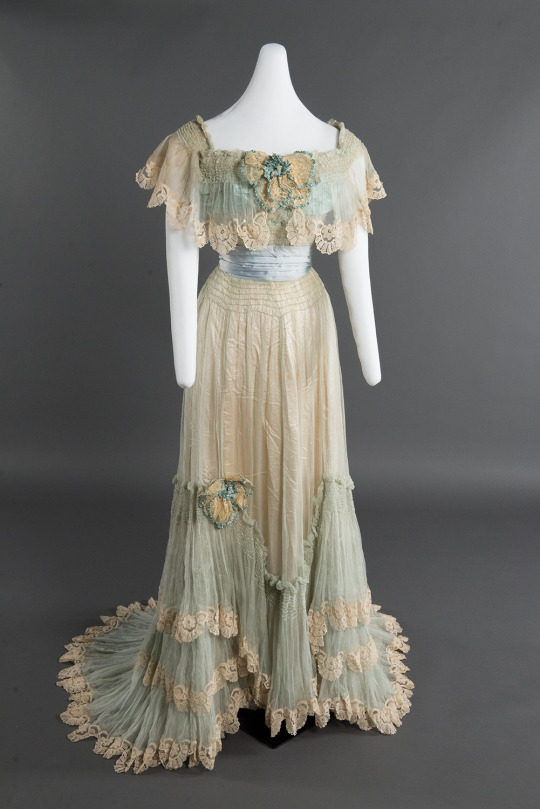

Dress Credit: Callot Soeurs (French, active 1895–1937), Evening dress, about 1900, silk, chiffon, and linen lace • Private collection
Viewing both the portrait and the photograph of the dress offers a distinct occasion to consider the artist, the subject, the dynamics of portraiture, and the culture of the time period during which both portrait and garment were produced. Now on view, the elegant blue and white evening dress designed by the Parisian couturier Callot Soeurs at the turn of the twentieth century and worn by Mrs. Abbott Lawrence Rotch for her portrait by John Singer Sargent. The premier international portraitist of the late nineteenth and early twentieth centuries, Sargent flourished as a painter to the English upper class.
#art#art history#portrait#painting#fine art#female portrait#british high society#society portrait#beautiful dresses in paintings#fashion history#callot soeurs#dress design & maker#john singer sargent#parisian couturier#early 20th century british art#american-british artist#the resplendent outfit blog#art & fashion blog
7 notes
·
View notes
Text
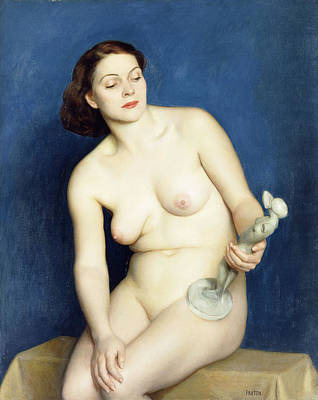
William McGregor Paxton (American, 1869-1941) • Nellie and Phryne c. 1923 • Private collection
#art#painting#fine art#art history#william mcgregor paxton#american artist#art nude#american painter#boston school#portrait#female portrait#oil painting#boston artist's guild#realism#portraitist#pagan sphinx art blog#banned on pinterest
146 notes
·
View notes
Text
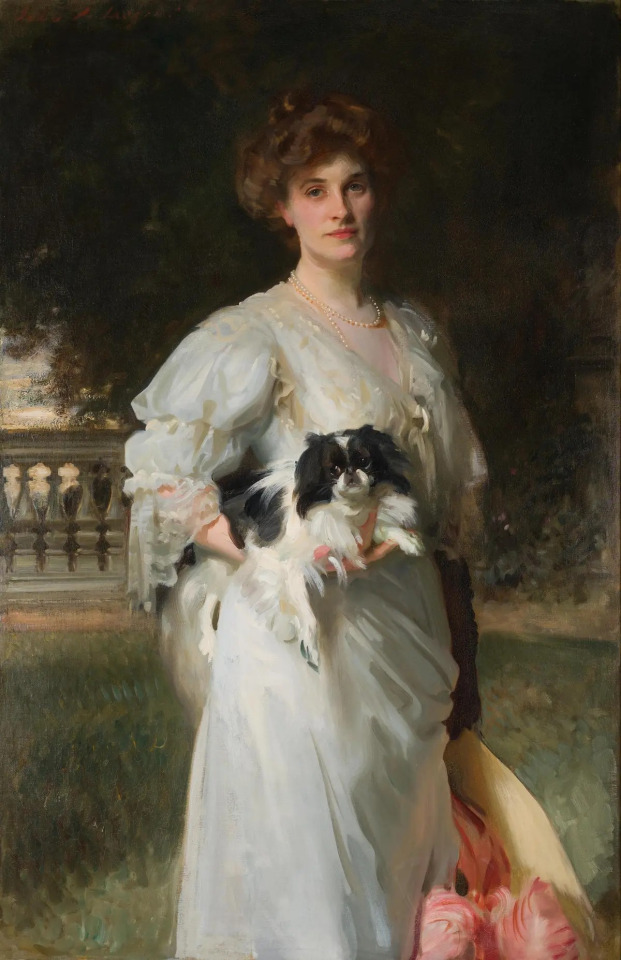
John Singer Sargent, Portrait of Mrs. Frederick Guest (Amy Phipps) • 1905 • The Norton Museum of Art, Pasadena, California
#art#painting#fine art#art history#john singer sargent#american artist#edwardian era painter#american renaissance#portraitist#american expat#portrait#female portrait#society portrait#the white dress#women in white#la robe blanche art blog#dogs in artworks#art blogs on tumblr
64 notes
·
View notes
Photo
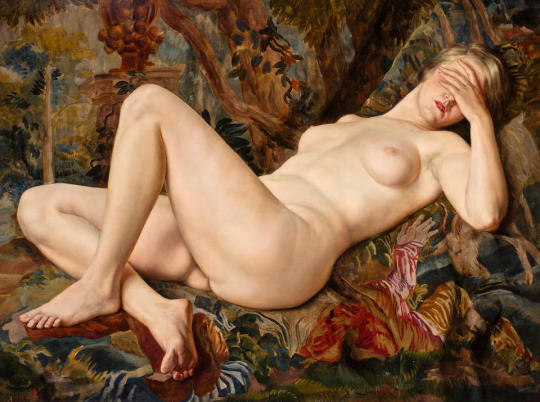
Boris Chaliapin (1904-1979) Russian/American
“Reclining nude” 1928
Boris Chaliapin was a noted portraitist and illustrator for Time magazine, created over 400 cover illustrations for the magazine between 1939 and 1970.
68 notes
·
View notes